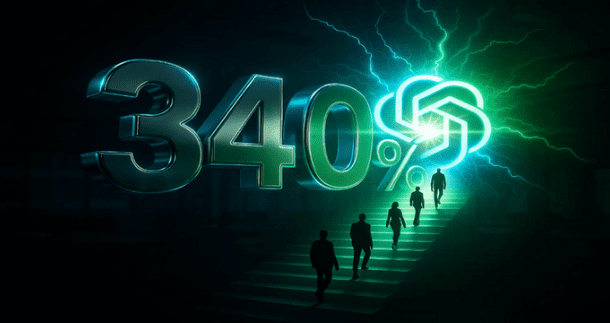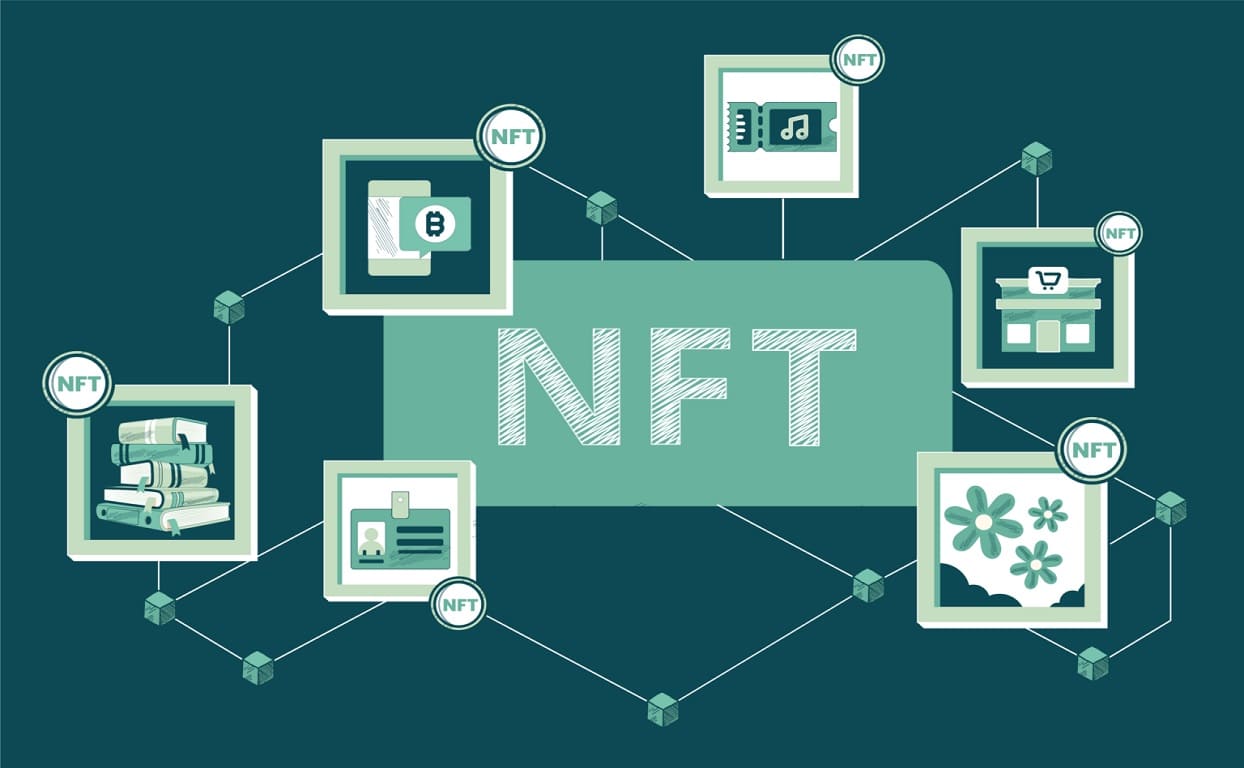NFT royalties ensure that creators receive a percentage of sales each time their digital assets are resold. Powered by smart contracts, this system offers a continuous revenue stream for artists, musicians, and other digital creators. Through NFT marketplace app development, platforms can integrate royalty features to automate and manage these payments efficiently.
NFT royalties allow creators to earn a share of profits from each secondary sale of their digital assets, promoting fair compensation for their work. Smart contracts play a vital role by automating the royalty payments, ensuring creators receive their due amounts accurately and promptly without the need for intermediaries. However, challenges such as varying marketplace policies and unauthorized minting highlight the need for stronger copyright protections and standardized royalty agreements to ensure creators are properly compensated.
What Are NFT Royalties?
NFT royalties are payments made to creators for each secondary sale of their digital assets. Essentially, when a digital artwork or other digital collectible is resold, the original creator earns a percentage of the profit. This concept ensures that creators benefit from their work as it appreciates in value, providing a fair compensation model that aligns with the evolving digital art world and nft collections. An nft represents a significant opportunity for creators in this landscape.
The significance of NFT royalties extends beyond financial gain. They enhance the credibility and value of digital assets for creators. Key points about NFT royalties include:
- Creators set a royalty percentage, typically between 2.5% and 10%, during the minting process.
- This ensures creators receive a portion from each subsequent sale.
- The system incentivizes creators.
- It fosters a more sustainable and equitable digital art ecosystem.
Blockchain technology plays a crucial role in ensuring transparency in NFT royalty payments. Each transaction is records transactions and stored on the blockchain network, leaving a clear and immutable trail. This transparency is vital for both creators and buyers, as it guarantees that royalty payments are made promptly and accurately each time an NFT is resold.
NFT royalties offer digital content creators a new income stream. Whether you’re an artist selling digital art, a musician sharing audio files, or a writer offering e-books, the potential to earn royalties from secondary sales and optional royalties opens up exciting financial possibilities. This system allows creators to keep benefiting from their work, encouraging the production of high-quality digital content.
How Do NFT Royalties Work?
Creators typically set NFT royalties during the minting process, coding them into the smart contract on the platform. An nft creator uses a smart contract that is self-executing, with the agreement terms directly written into its code. It governs NFT resale and ensures automatic royalty payments whenever the asset is resold. This removes the need for intermediaries, streamlining the process.
Royalty percentages generally range from 2.5% to 10%, averaging around 6%. These percentages are predetermined by the creator and embedded into the NFT’s smart contract. This means that every time the NFT is sold on the secondary market, a portion of the sale price is automatically sent to the original creator. This process continues for the lifetime of the NFT, allowing creators to benefit from their work indefinitely.
One of the most appealing aspects of NFT royalties is the automation provided by smart contracts:
- These contracts ensure that royalties are paid promptly and accurately without any manual intervention.
- When an NFT is resold, the smart contract automatically calculates and transfers the royalty payment to the creator’s wallet.
- This automation streamlines the process.
- It builds trust within the NFT ecosystem, as creators can be assured they will receive their due payments and pay royalties.
Creators can continue to earn from secondary sales without involving intermediaries due to the blockchain technology and smart contracts. This decentralized approach disrupts traditional models where intermediaries could take a significant cut of the profits. By leveraging blockchain technology, creators earn from NFT creators can retain a higher percentage of their earnings, making the digital art market more lucrative and fair.
Creating an NFT with Royalties
Creating an NFT with royalties involves a few key steps, starting with the minting process:
- Minting is the act of creating a new NFT by uploading a digital file to a marketplace.
- The marketplace then encrypts and records the asset on a blockchain.
- This process involves creating a new block.
- Validating NFT information.
- Closing the block.
The digital file can be anything from digital art to audio files, and this initial step is crucial as it sets the foundation for the generative art digital artist NFT projects’ existence and future transactions, including digital representations, digital works, and digital asset.
During the minting process, smart contracts are integrated into the NFT. These contracts assign ownership, represent ownership, manage NFT transfers, and crucially, embed the royalty rates. The creator sets the royalty percentage, which is then coded into the smart contract. This ensures that every time the NFT is resold, the predetermined royalty rate is automatically applied. The integration of smart contracts is what makes NFT royalties work seamlessly, providing a secure and transparent way to enforce royalty payments.
Setting the right royalty fees rate is an important consideration for creators. They need to strike a balance between earning fair compensation and ensuring their NFTs remain attractive to buyers. High royalty rates might deter potential buyers, while too low a rate might not provide sufficient income from secondary sales. Therefore, creators must carefully consider their audience and the potential resale value of their digital assets when setting royalty rates.
The minting process includes:
- Validating the NFT information, which guarantees the NFT’s uniqueness and accurate information recording.
- Closing the block on the blockchain, which ensures the NFT is ready for transactions.
- Embedding and enforcing royalty terms via the blockchain, and to mint nfts.
This process not only secures the NFT’s authenticity but also guarantees that the creator will receive their due royalties from every future transaction.
Selling NFTs and Earning Royalties
For digital creators, selling NFTs and earning royalties is an exciting prospect. Key points about NFT royalties include:
- Royalty rates typically range from 5% to 10%, though some creators set them as high as 20%.
- This flexibility allows creators to tailor their royalty rates according to their needs and market dynamics.
- When an NFT sells on a marketplace, the smart contract automatically applies the specified royalty rate.
- This ensures the creator receives their share from each resale.
Each NFT resale triggers a royalty payment to the original creator, and these transactions are often subject to resale royalty rights. As the NFT changes hands, the creator continues to earn a percentage of each sale. This ongoing income can be particularly lucrative, especially if the NFT’s value appreciates over time. For example, a popular digital artwork with multiple resales can generate significant royalty income for the creator.
Secondary market sales can yield substantial income for NFT creators, particularly as their NFTs’ value increases. The secondary market is vibrant, with buyers and sellers trading NFTs based on perceived value. As more people buy and resell an NFT, the creator’s royalties accumulate, providing continuous revenue. This model contrasts sharply with traditional art sales, where the artist only profits from the initial sale.
Smart contracts play a pivotal role in automating royalty payments. Upon resale, the smart contract calculates the royalty amount and transfers it to the creator’s crypto wallet automatically. This automation ensures prompt and accurate royalty payments, fostering trust and transparency in the NFT market. Creators can confidently sell their digital assets, assured they will continue to benefit from their work beyond the initial sale.
The potential for significant income from secondary market sales attracts creators to the NFT space. Whether selling digital art, music, or other digital formats, earning royalties from resales opens new financial opportunities in a particular marketplace to sell nfts. This system rewards creators and encourages high-quality digital content, enriching the NFT ecosystem and providing buyers with valuable, unique assets. Additionally, a brand that sells NFTs trademarked can further enhance its presence in this evolving market.
Challenges and Risks in Enforcing Royalties
Enforcing royalties in the NFT space presents several challenges and risks:
- A significant issue is the varying royalty policies across different most nft marketplaces and proprietary marketplace.
- Some marketplaces enforce royalties, while others make them optional for creators.
- Platforms like Art Blocks, Magic Eden, and Yuga Labs enforce royalties, ensuring creators receive their due payments.
- The lack of a standardized approach can create inconsistencies and confusion for creators and buyers alike.
Unauthorized minting of NFTs complicates royalty enforcement. Artists often see their work minted and sold without permission, making it difficult to claim rightful earnings. Smart contracts automate royalty payments but do not inherently enforce copyright protections. This enforcement gap leaves creators vulnerable to exploitation, highlighting the need for stronger copyright protections within the NFT ecosystem.
Jurisdictional issues further complicate the legal landscape for NFTs. NFTs exist on decentralized networks, making it challenging to determine applicable laws and regulations. This decentralized nature creates legal grey areas, complicating the enforcement of property rights and royalty payments across jurisdictions. Standardized licensing agreements could minimize disputes and provide clearer guidelines for creators and buyers.
Emerging discussions on standardized royalties across nft platforms aim to protect NFT creators and ensure they receive fair compensation. Standardizing royalties would:
- Create a consistent framework for payments, easing management for creators
- Clarify obligations for buyers
- Enhance NFT market credibility
- Attract more creators and buyers to the space
Despite these challenges, the potential to earn royalties from NFT sales remains a strong incentive for creators. Understanding the risks and navigating NFT market complexities allows creators to leverage this new revenue stream to their advantage. The evolving legal and technological landscape will likely bring more clarity and protection for creators, ensuring they benefit from their work in the digital age.
Summary
NFT royalties have emerged as a revolutionary way for creators to earn income from their digital assets. By embedding royalty terms into the NFT’s smart contract, creators can ensure they receive a percentage of each secondary sale, providing a continuous stream of revenue. This model not only offers fair compensation but also enhances the value and credibility of digital assets.
The mechanics of NFT royalties involve setting royalty percentages during the minting process and automating payments via smart contracts. This automation ensures transparency and accuracy, allowing creators to benefit from secondary sales without involving intermediaries. The ability to earn royalties from resales opens up new financial opportunities for digital creators, encouraging the production of high-quality content and enriching the NFT ecosystem.
Despite the challenges in enforcing royalties, such as varying marketplace policies, unauthorized minting, and jurisdictional issues, the potential benefits for creators are significant. Emerging discussions on standardized royalties and stronger copyright protections will likely bring more clarity and protection for creators. As the NFT market continues to evolve, NFT royalties will play a crucial role in shaping the future of digital art and content creation.









